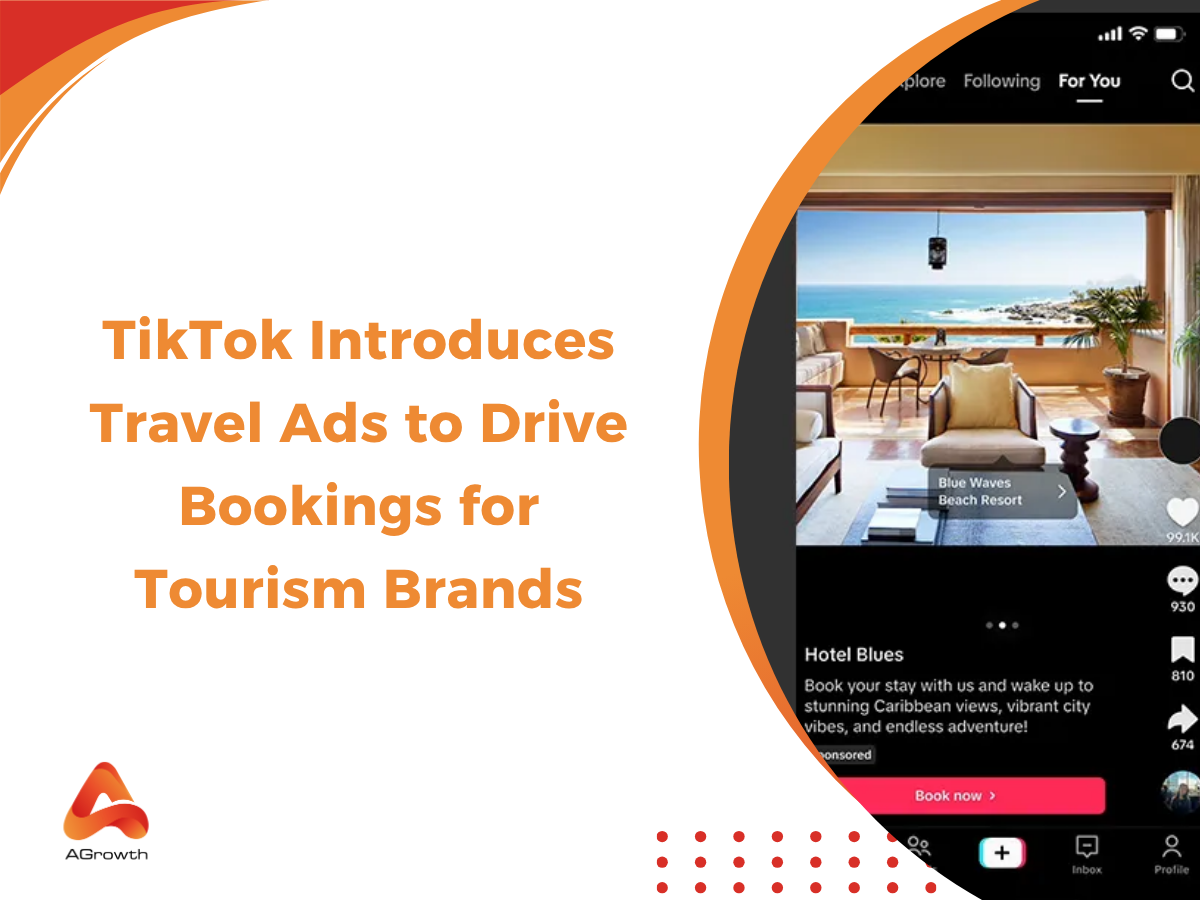
Table of Contents
All TikTok Ads Formats Explained: Which One Is Best for Your Brand?
As TikTok continues to grow into a powerhouse platform for digital marketing, understanding its advertising options is essential for any brand aiming to capture attention in seconds. While going viral can happen organically, successful businesses often rely on TikTok Ads to scale reach, build awareness, and drive conversions.
But the first step to success on TikTok isn’t launching a campaign—it’s choosing the right ad format. In this guide, we’ll explore every TikTok ads format in detail, help you understand how each works, and provide tips to choose the best one based on your marketing goals.
Why choosing the right TikTok Ads format matters
Not all TikTok ads are created equal. Each format serves a unique purpose and caters to different parts of the customer journey. Some are ideal for sparking brand recognition, while others work better for conversions or community engagement. Choosing the right format isn’t just about visibility—it’s about how well your ad fits the TikTok experience and user behavior.
Before diving into each ad type, it’s important to note that TikTok’s strength lies in native content that blends seamlessly with user-generated videos. That’s why even paid ads need to feel authentic, engaging, and tailored for a short-form, full-screen environment.

Overview of all TikTok Ads formats
TikTok offers a wide range of ad formats, each with its own structure, placement, and creative potential. Let’s break down the main types you’ll encounter.
In-Feed Ads
TikTok in-feed Ads appear within a user’s "For You" feed—typically the fourth video a viewer sees when scrolling. These are short-form videos (up to 60 seconds) that behave like organic content, allowing users to like, comment, share, and follow the TikTok ad account.
Why it works: In-feed ads feel natural and non-intrusive. They’re ideal for storytelling, showcasing product features, or launching new offers.
Best for: Traffic, app installs, conversions, and engagement.
Specs:
-
Video Duration: 5–60 seconds (15 seconds recommended)
-
Resolution: ≥ 720 × 1280 px
-
Aspect Ratio: 9:16 (vertical)
-
File type: .mp4, .mov, .avi
-
Max file size: 500 MB
-
Text: Up to 100 characters (longer text may be cut off)
-
Sound: Strongly recommended (auto-play with sound ON)
TopView Ads
TopView Ads take over the screen as the first video a user sees when opening the TikTok app. These high-impact ads can last up to 60 seconds and are unskippable during the initial few seconds.
Why it works: Maximum visibility and strong brand recall. These ads are great for product launches or major announcements.
Best for: Brand awareness and reach.
Specs:
-
Video Duration: 5–60 seconds (longer content allowed)
-
Resolution: ≥ 720 × 1280 px
-
Aspect Ratio: 9:16 (full screen)
-
File Type: .mp4, .mov
-
Max File Size: 500 MB
Brand Takeover
Brand Takeovers display immediately when a user opens the app, showing a static image, GIF, or 3–5 second video. They often link to a landing page or a TikTok profile and are exclusive to one advertiser per day per category.
Why it works: Zero competition in the moment. Users see only your ad, giving you full attention.
Best for: High-impact campaigns, traffic generation, and promotions.
Specs:
-
Format: Static (JPG/PNG) or Video (3–5 sec max)
-
Resolution: 1080 × 1920 px
-
Aspect Ratio: 9:16 (vertical only)
-
File Type: .jpg, .png, .gif, .mp4
-
Max File Size: 3 MB (image), 500 MB (video)
Spark Ads
TikTok Spark Ads are native ad format, allowing brands to promote organic posts—either from their own account or from creators—with full attribution and boosted visibility. They retain the original post’s likes, comments, and shares.
Why it works: Feels authentic, drives higher engagement, and leverages creator credibility or brand familiarity.
Best for: Engagement, conversions, and scaling user-generated content (UGC).
Specs:
-
Video length: Based on the original post (no strict limits)
-
Resolution: Original resolution used in the TikTok video
-
Aspect ratio: Typically 9:16
-
Engagement: Keeps existing likes, shares, and comments

Branded Hashtag Challenge
Branded Hashtag Challenges invite users to participate in a themed challenge, using a specific hashtag created by your brand. These usually last for 3–6 days and often appear in the Discovery tab.
Why it works: Taps into community creativity and encourages viral participation. Generates huge UGC volumes.
Best for: Engagement, brand loyalty, and virality.
Specs (Main Banner):
-
Image Size: 1080 × 1920 px
-
File Type: .jpg, .png
-
Challenge Video (Optional): Same as In-Feed Ad video specs
-
Duration: 3–6 days (campaign run)
-
Placement: TikTok Discovery page + hashtag page
Branded Effects
Branded Effects let brands create custom AR filters, 2D/3D effects, or stickers that users can add to their own videos. These filters live in TikTok’s Effects panel and are often used alongside hashtag challenges.
Why it works: Interactive and fun. Branded effects make users active participants in your TikTok ads campaign.
Best for: Interactive brand awareness and long-tail engagement.
Common mistakes to avoid when choosing a TikTok Ads format
While TikTok offers a variety of ad formats to suit different goals, choosing the wrong one or using the right one poorly can result in wasted budget and underwhelming results. Here are the most common mistakes brands make when selecting TikTok ad formats, and how to avoid them:
1. Picking a format that doesn’t match the campaign goal
One of the biggest pitfalls is selecting an ad format that doesn’t align with your objective. For example, using a Brand Takeover to drive eCommerce conversions may not perform as well as an In-Feed or Spark Ad with a direct CTA.
Avoid it by:
-
Defining your goal clearly: Awareness, Engagement, Conversions, etc.
-
Mapping formats to the customer funnel (e.g., TopView for awareness, Spark Ads for engagement, In-Feed for conversions).
2. Treating all TikTok Ads like traditional ads
Many advertisers reuse creatives from other platforms without adapting them for TikTok’s native, short-form style. This breaks the seamless user experience and results in poor engagement.
Avoid it by:
-
Designing mobile-first, vertical videos.
-
Using trends, sounds, captions, and editing styles that match the TikTok aesthetic.
-
Prioritizing storytelling over hard selling.
3. Ignoring creative best practices for each format
Each TikTok ad format comes with unique opportunities and limitations. Using the same creative across formats or failing to optimize for things like safe zones or sound can lower performance.
Avoid it by:
-
Understanding specs for each format (video length, file size, aspect ratio).
-
Avoiding UI overlays (like text placed too close to TikTok buttons).
-
Adding engaging visuals in the first 3 seconds.
4. Underestimating the Power of Spark Ads
Some brands overlook Spark Ads in favor of fully produced content. However, Spark Ads often outperform traditional formats by leveraging existing creator content and building authenticity.
Avoid it by:
-
Exploring collaborations with creators and influencers.
-
Boosting high-performing organic posts to extend their reach.
-
Using Spark Ads to amplify UGC without the need for heavy production.
5. Overcomplicating hashtag challenges
Branded Hashtag Challenges are meant to be simple, fun, and easy to replicate. A complex or vague challenge will fail to drive user participation and engagement.
Avoid it by:
-
Keeping the concept simple and visually clear.
-
Providing a creative sample video.
-
Using influencers to spark momentum in the first 24–48 hours.
6. Neglecting data when testing formats
Some brands switch ad formats randomly without analyzing what works. Others avoid testing altogether, sticking with the same approach even if it underperforms.
Avoid it by:
-
Running A/B tests between formats, audiences, or creative styles.
-
Tracking metrics per format: CTR, ROAS, engagement rate, and view-through rate.
-
Using TikTok Ads Manager’s reporting tools to make data-driven decisions.
7. Failing to adapt to evolving TikTok trends
TikTok’s ecosystem is fast-moving. What works this month may not work next month. Using outdated formats or irrelevant creatives reduces impact significantly.
Avoid it by:
-
Staying updated on TikTok trends and viral formats.
-
Refreshing your creatives regularly.
-
Following competitor ads and learning from the TikTok Creative Center.
Best practices for each TikTok Ads format
Let’s dive into how to get the most out of each format.
In-Feed Ads
-
Capture attention within the first 3 seconds.
-
Use subtitles and trending sounds.
-
Include a strong CTA (Call-to-Action).
TopView Ads
-
Invest in high-quality visuals and editing.
-
Keep branding clear from the start.
-
Avoid overly salesy language—be visual.
Brand Takeovers
-
Use bold messaging and visuals.
-
Add a clickable CTA to drive users immediately.
-
Make it mobile-first and vertical.
Spark Ads
-
Partner with creators who align with your brand.
-
Promote posts that already have strong engagement.
-
Let the content feel natural—don’t overbrand.
Branded Hashtag Challenges
-
Make the challenge simple and fun to replicate.
-
Offer incentives (e.g., shoutouts, giveaways).
-
Promote using influencers to kickstart participation.
Branded Effects
-
Make the effect intuitive and fun to use.
-
Test it yourself before going live.
-
Encourage use by integrating it into trends.
Final Thoughts
TikTok offers one of the most diverse and engaging ad ecosystems in modern digital marketing. From native-style In-Feed Ads to high-impact TopView and creator-powered Spark Ads, each format serves a distinct role in your marketing strategy. But knowing the differences isn’t enough; you need to align your ad formats with campaign objectives, audience behavior, and creative resources.
Whether you're looking to drive awareness, boost engagement, or scale conversions, the right ad format can elevate your campaign, but only when paired with a reliable ad account and a structured testing strategy.
If you're struggling with limited ad delivery, frequent rejections, or account instability, it might not be your creatives; it could be your account. That’s where AGrowth can help. We provide pre-approved TikTok Agency Ad Accounts designed for scale, with full access to advanced formats and better delivery performance.
Related posts:










Your comment